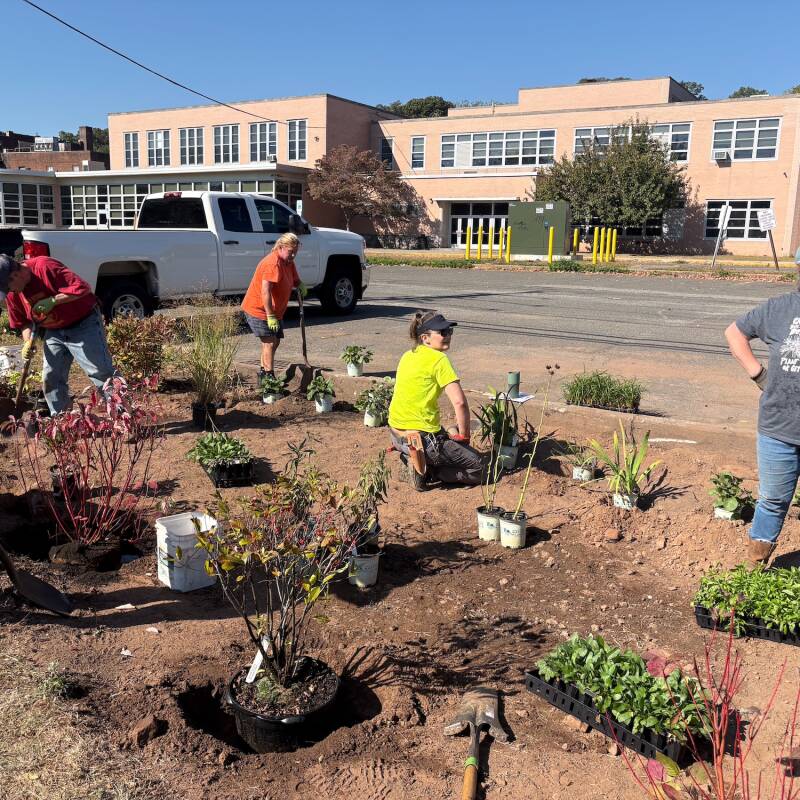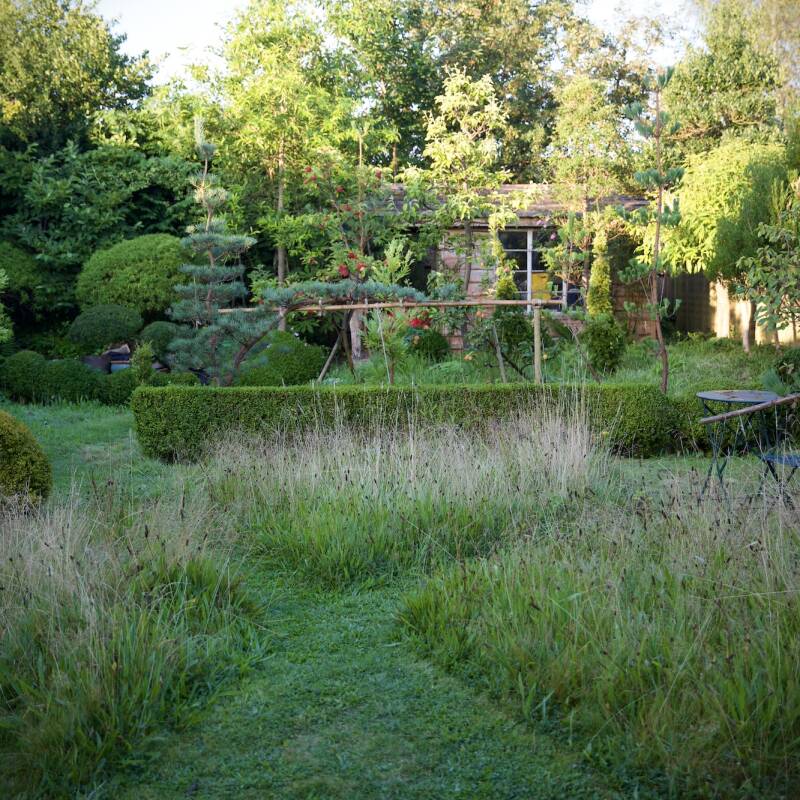Side gardens are notoriously difficult to landscape. They can be narrow alleys or shady, and may have variable light conditions or poor soil or ugly utilities lines to hide. Portland, Oregon-based garden designer Darcy Daniels of Bloomtown Gardens has come up with some stylish ways to make her own side garden beautiful and productive even in the height of summer.
Photography by Gillian Carson for Gardenista.

Above: The side garden used to be a driveway. But as her garage was too small to use, in 2006 Daniels decided to make the area into a productive side garden growing both fruit and ornamentals.
“In the beginning I grew a lot more vegetables, but more recently I have moved over to ornamentals and easy fruit like blueberries and raspberries,” she says. “It’s not that it didn’t work, it’s that I found I had less time to tend the garden and I quite liked going to the farmers’ market, and so it has morphed over the years.”

Above: The entrance to the garden is through a wooden gate that uses delightful 1930s stained glass panels, which she thinks originated in England.

Above: Daniels bought the windows from a local antiques dealer and reused them as a nod to her previous garden.

Above: Daniels also is the founder of eGardenGo, a web app for gardeners. In her own garden, she has created a series of raised beds laid out in a zig-zag pattern to encourage visitors to meander through the garden and stop to look at different elements. The beds are wider in some areas to allow for some quite large plants, such as dahlias. But it is quite narrow in areas too, where she has planted vines that cling to the steel mesh fence.
“Narrow spaces can feel very linear and fast, like you are asked to walk right through them without stopping to look at anything,” she says. “The trick is to take away the bowling-alley aspect and play with shape and form until you create a different story.”

Above: Side yards, by their very nature, are often the boundary between you and your neighbor. Creating a screen or fence that is also neighborly is important. Darcy made a fence out of a wide metal mesh that has a rusted appearance. She added glass balls, for decoration, that were created by a local artist. They also bring more light into the space.

Above: “The mesh lets the light though and so I have more growing options. It also gives me an opportunity to bring some art into the space,” she says. “On the flip side, don’t be afraid to use a solid screen if it’s needed. We have one fence panel that is solid to afford privacy to both neighbors. That works for us.”

Above: Darcy has created interest by using very tall plants. On one side is a clematis that climbs the side of her house and on the other is a huge dahlia that occupies the middle of the garden and almost forces visitors to stop and look up at its bright orange blooms.

Above: Container groupings are vital to keeping the garden looking fresh. Darcy frequently changes out plants and even pots to create a new look based on the season. Her plants here are low maintenance, with an emphasis on edible fruits (raspberries) and shrubs (blueberries) and more perennial flowers (dahlias and echinacea).

Above: “If you are in an urban or new construction situation, then raised beds enable you to control your growing medium more successfully. It also extends the variety of plants you can use,” Daniels says.

Above: “Changing your garden’s line from linear to angular can open up lots of new opportunities,” she says.

Above: “Hiding ugly utilities is often a need in a side garden,” Daniels says. “Maybe you use a plant, or maybe a screen, but you can use the fact that you are playing with the width of the beds to hide these.”

Above: Daniels says the garden will probably continue to evolve as her tastes and needs change: “My main garden is so small that I run out of space a lot. The side yard has become an experimental ground where I try out plants. I play with flowers more there too, which I tend not to in the main garden. I rarely cut flowers and you won’t see me deadheading either, so the side yard certainly has a free feeling to it.”
For more of our favorite Portland-area gardens, see:
- Before & After: Expat Gillian Carson’s English Garden in Portland.
- Steal This Look: A Black Backyard Backdrop at Library House.
- Rehab Diary: A Garden Makeover for a Ranch-Style House in Oregon.
.jpg)








Have a Question or Comment About This Post?
Join the conversation